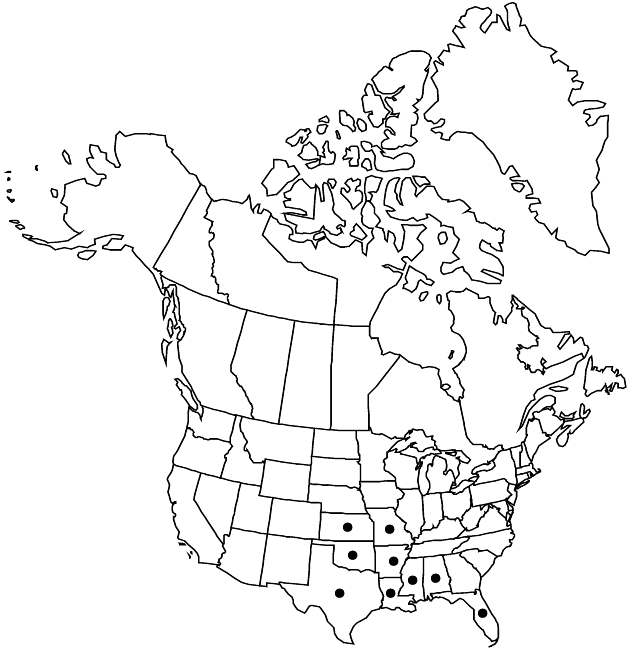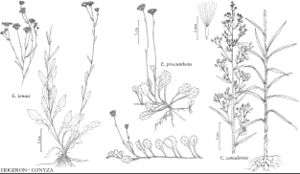Erigeron tenuis
Fl. N. Amer. 2: 175. 1841.
Biennials or short-lived perennials, 10–45 cm; fibrous-rooted, caudices simple. Stems ascending (usually reddish proximally, branched distally), strigose, rarely hirsute proximally, eglandular. Leaves basal (commonly persistent) and cauline; basal blades oblanceolate to obovate or spatulate, 20–100(–130) × 4–20 mm, margins serrate or crenate to pinnately lobed, faces sparsely hirsute to strigoso-hirsute (hairs ascending), eglandular; cauline becoming narrower and entire (bases not clasping or subclasping), abruptly reduced near midstem. Heads (1–)3–20(–60) in loosely corymbiform arrays (usually from branches beyond midstem). Involucres (2–)2.5–4 × 5–10 mm. Phyllaries in 2–4 series, sparsely strigose, eglandular. Ray florets 60–120; corollas blue to pale lavender or white, drying blue to purplish, 3–5 mm, laminae not coiling or reflexing. Disc corollas 2–2.7 mm. Cypselae 1–1.2 mm, 2(–4)-nerved, faces sparsely strigose; pappi: outer of setae, inner of 11–15 bristles.
Phenology: Flowering mid Mar–May(–Jun, –Nov).
Habitat: Open oak, oak-pine, or pine woodlands, roadsides, fencerows, pastures, bottomland, sand or sandy clay, less common in clay
Elevation: 10–200 m
Distribution

Ala., Ark., Fla., Kans., La., Miss., Mo., Okla., Tex.
Discussion
A plant reported as Erigeron tenuis disjunct in North Carolina is perhaps better identified as E. strigosus: pappus bristles on the ray cypselae are reduced and variable in number.
Selected References
None.
